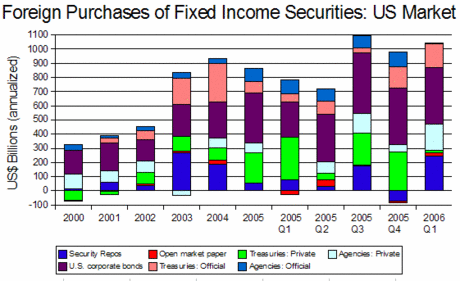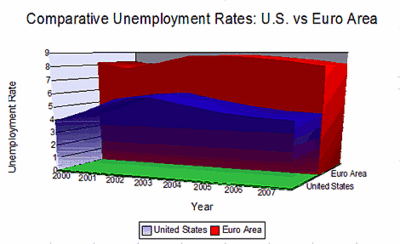Trade Deficit Continues to Support Bond Markets: Q1 2006
by John Schroy filed under Treasuries, Open Market, Agencies, Mortgages, Corporate Bonds, Corporate Managers, Foreign Investors
The excess of US imports over exports continued to provide dollars to the rest of the world, which were invested in the US bond market.
The graph shows that foreign investments flowed into the market for US fixed income securities in Q1 2006, at a rate 25% greater than in 2005. (See Table F107, Rest of the World).
 Foreign Purchases of US Fixed Income Securities
|
||
Although foreign central banks reduced flows into US treasuries and agencies after the high point of 2004, the shortfall has been more than covered by flows into bonds from foreign private sources.



